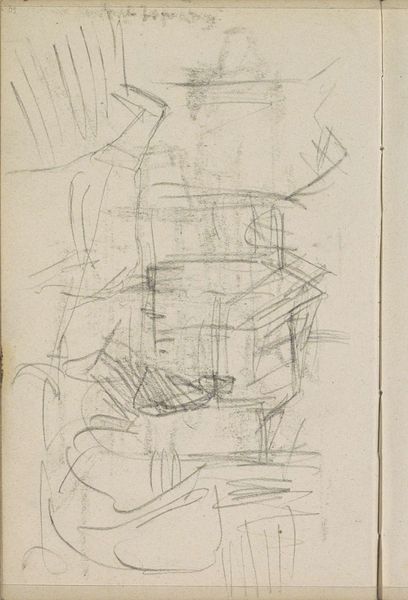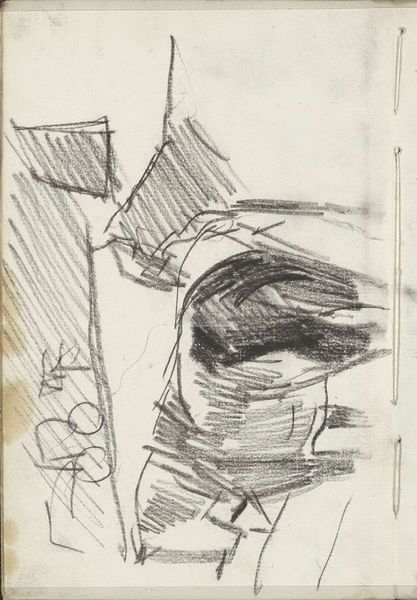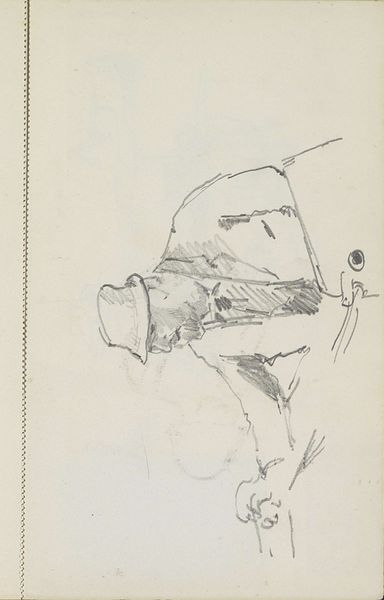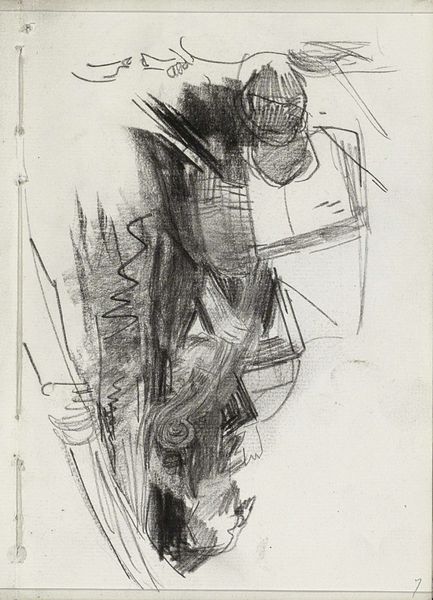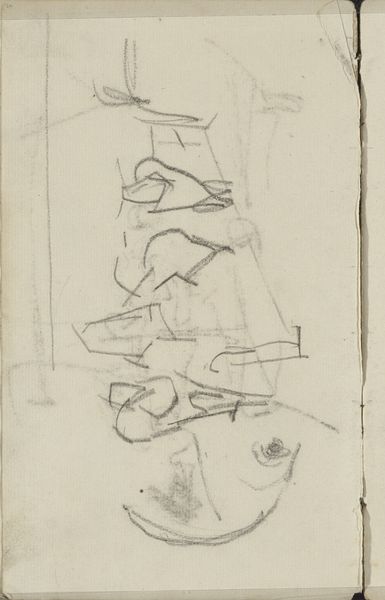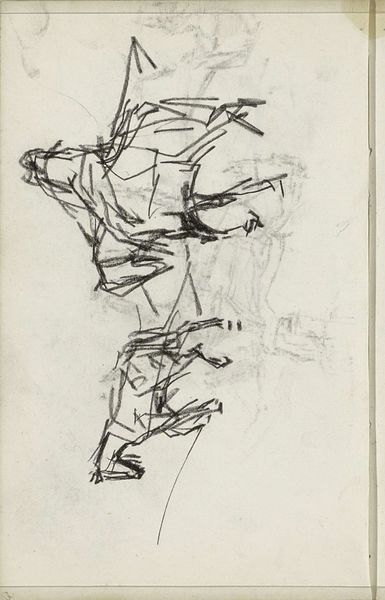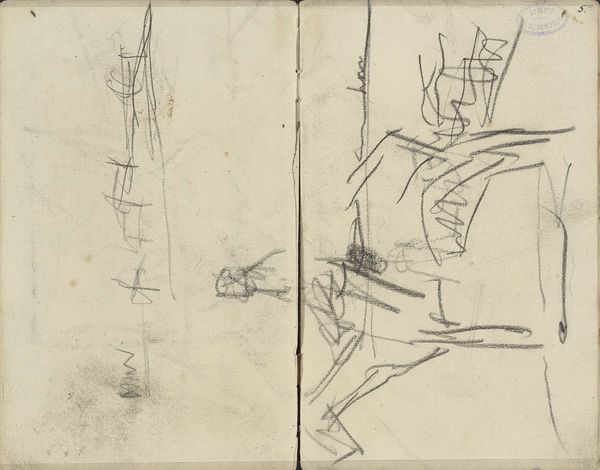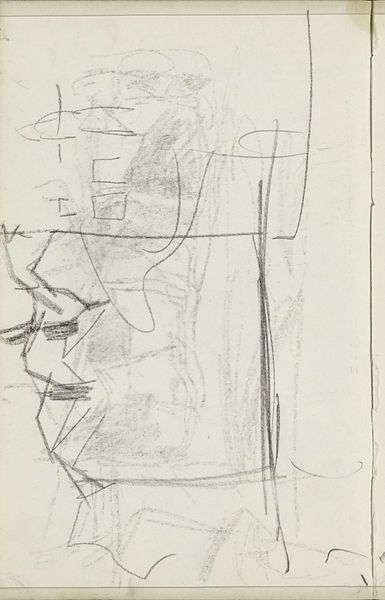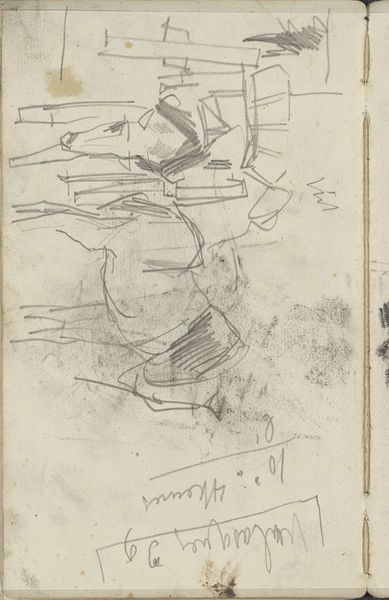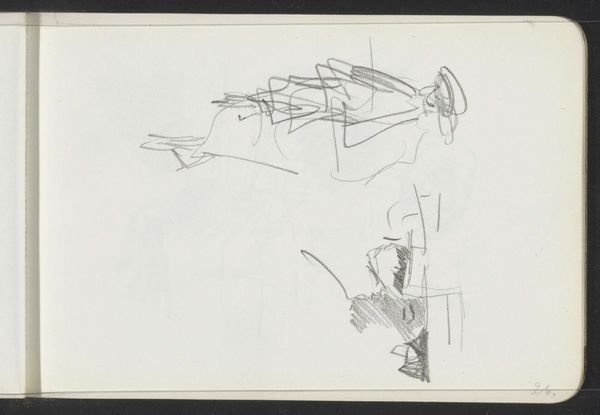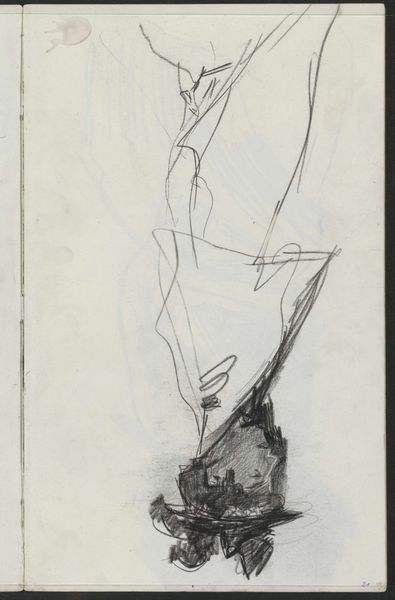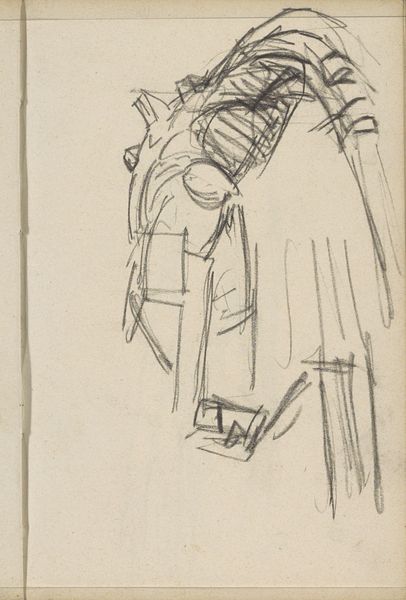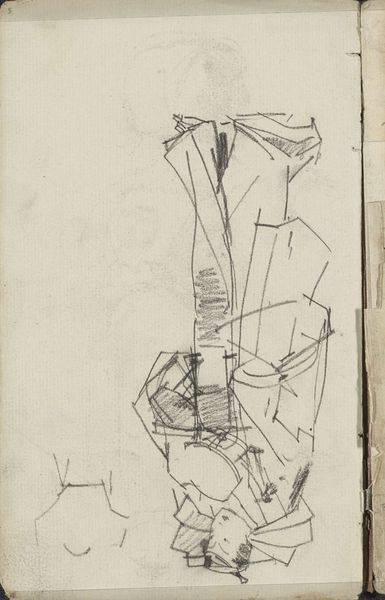
Copyright: Rijks Museum: Open Domain
Curator: At the Rijksmuseum, we have Isaac Israels’ intriguing drawing titled "Figuurstudies," dating from approximately 1875 to 1934, crafted using graphite and ink. Editor: Okay, right away, this feels like catching a glimpse into someone's visual brainstorm, like rifling through the cool, chaotic contents of their mind. I’m instantly curious about the stories behind these fragmented figures. Curator: Israels was indeed known for his quick sketches, capturing fleeting moments and impressions of modern life. He moved within impressionist circles, so the work isn’t highly polished; instead, his intention here was about capturing light, movement, and, especially, human energy in everyday life. Editor: Absolutely, it vibrates with a raw immediacy! Look at those quick, scribbled lines; they almost dance. And the way the figures seem to emerge and dissolve simultaneously...it's less about perfect representation and more about hinting at the underlying essence, don't you think? A wonderful, abstracted narrative emerges...or is it merely an imaginative abstraction? Curator: Exactly. Israels aimed to depict reality, not copy it. What is quite apparent is his observation skills and social standing within society; if you compare this study to his completed artworks, we begin to notice his intention to move his work from documentation to political agency and representation of the bourgeoisie and aristocracy through portraiture and urban environment. Editor: Hmmm, now that's a powerful shift, it certainly enhances and solidifies his vision as one of great intention. I suppose the beauty for me here resides in its unfinished state. It reveals his working methods, that is quite a generous and vulnerable invitation into an artist's processes. Curator: It truly provides access to witness Israels in transit, or becoming. And more specifically in conversation to an artist of his own time like George Hendrik Breitner, he situates himself in an informal approach. The drawings highlight themes surrounding cosmopolitanism and Dutch identity. Editor: Well, I can’t help but be enamored. The sketchiness actually amplifies its impact. It allows space for my imagination to collaborate, which always makes a viewing experience richer. Curator: Indeed, it's a powerful testament to the artist's vision and insight on modern Dutch identity that transcends simple realism. Editor: Beautifully put! It inspires me to embrace the messy, imperfect, and ultimately authentic aspects of creativity.
Comments
No comments
Be the first to comment and join the conversation on the ultimate creative platform.
